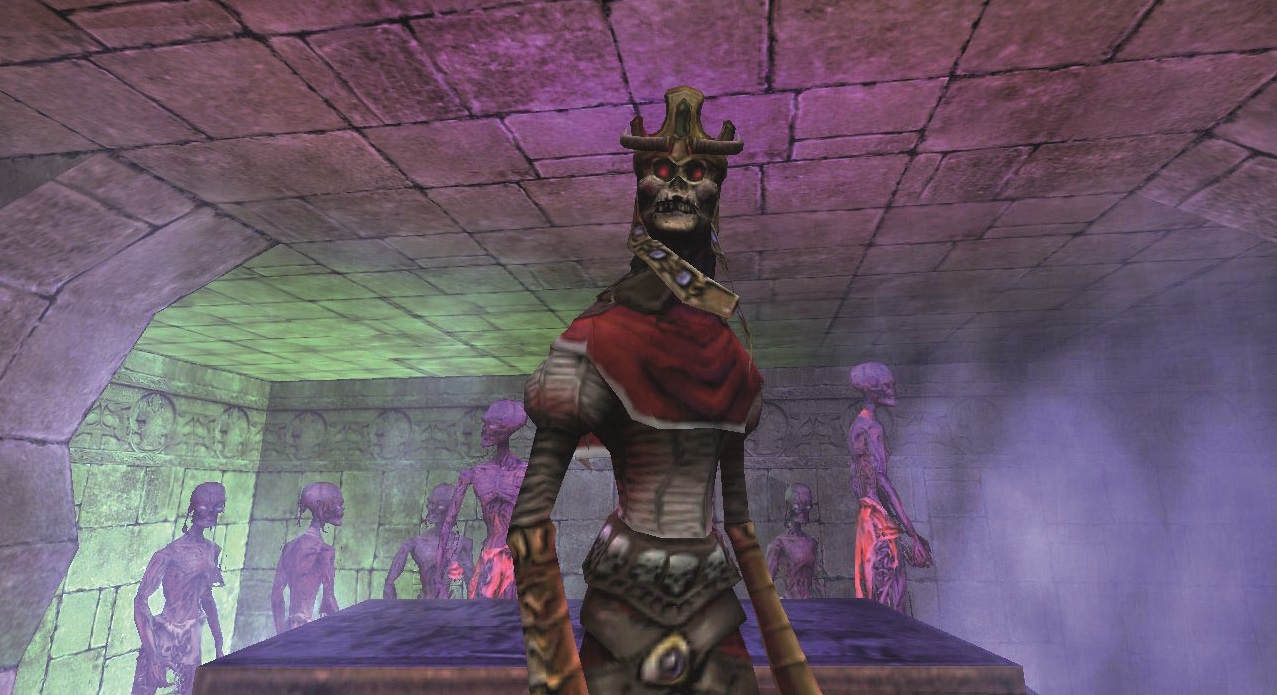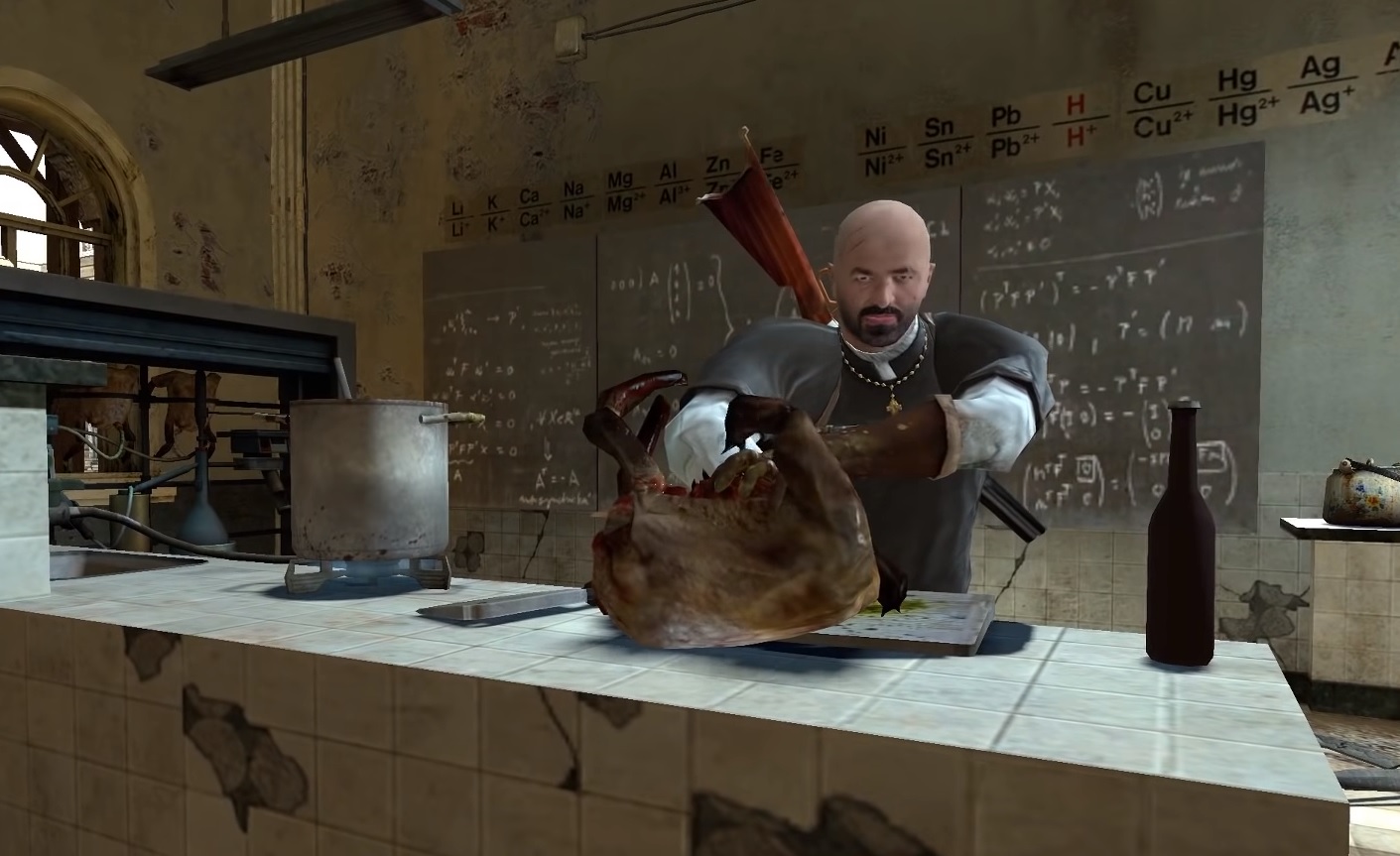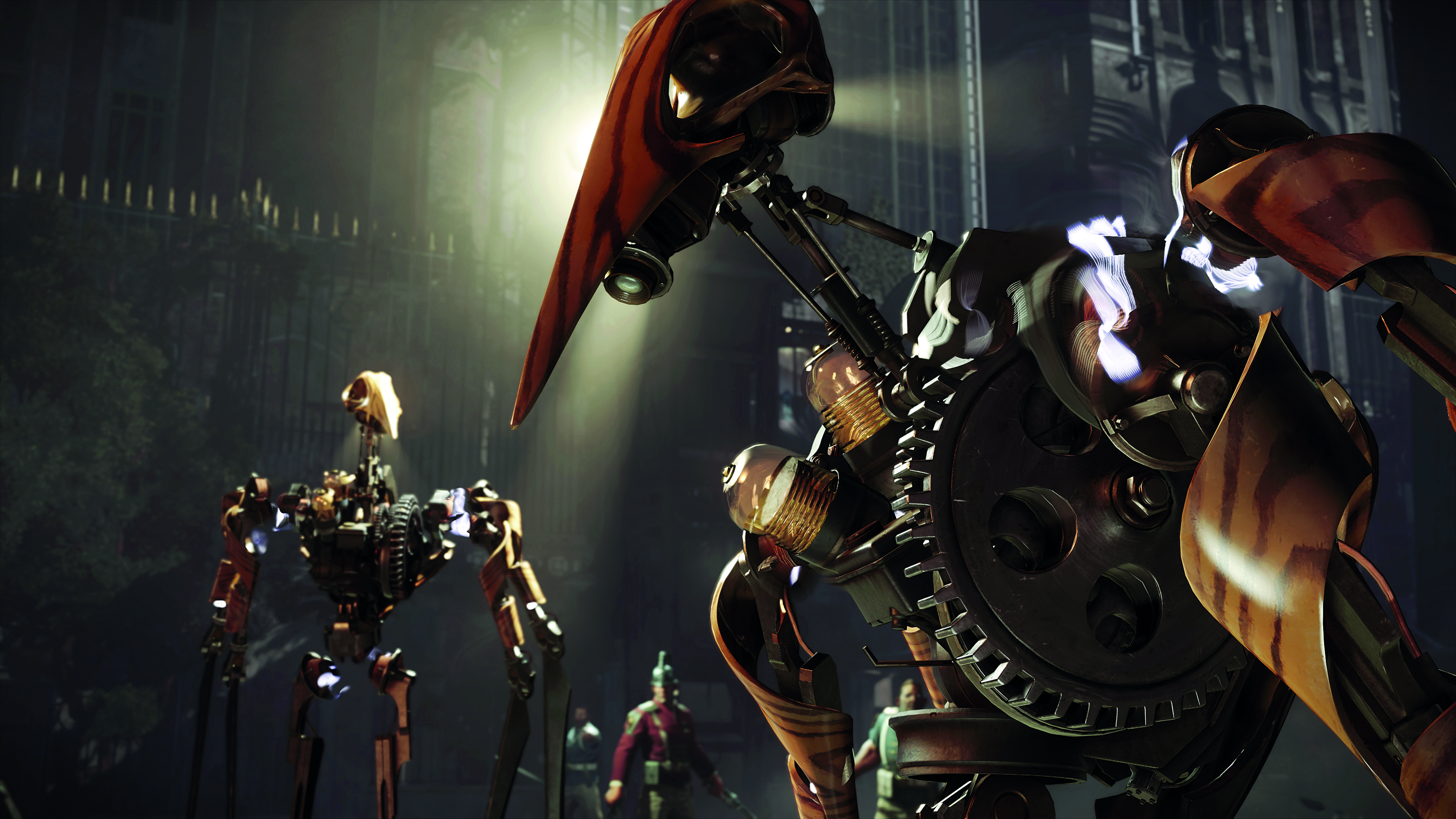How Arkane's passion for sims overcame all the odds
This article was originally published in PC Gamer UK 348. If you fancy reading more of our glossy magazine and its very stylish covers, consider getting a subscription.
There are some creative people born out of place and out of time. In 1993, Raphael Colantonio should have been one of the MIT graduates and musicians working on the Ultima Underworld games at Looking Glass Studios, infusing early 3D gaming with rudimentary physics and atmospheric sound design. Instead, through some cosmic oversight, he was a teenager in France, bored and playing in a band.
By the time Colantonio had gained enough games industry experience to run his own project, Looking Glass was a dying star; having invented the slow and thoughtful immersive sim, it had succumbed to the cruel commercial realities of a medium more interested in Doom and Diablo. Rather than learn the sensible business lesson, however, Colantonio decided to will his favourite studio back into being, on another continent, in a different millennium.
Assembling developers in Lyon, Colantonio directed a spiritual sequel to Ultima Underworld. After failing to come to an agreement with EA for the licence, his team invented its own realm—with humans, goblins, trolls and ratlings eking out an existence beneath, yep, a dying star.

There's no point in pretending Arx Fatalis is approachable today. Movement was sluggish and awkward, as if you really had woken up after a night on the cold, stone floor of a goblin prison cell. It ignored a decade of UI development, forcing players to interact with its dense first-person world via a semi-point-and-click system, like Deus Ex and Thief had never happened.
Going underground
But that stubborn resistance to modern conventions shaped the studio's values, too. This was a game in which you might guzzle wine to heal your wounds, then drunkenly pick a fight with a giant spider, timing your swings with the moments your sleepy eyes reopened. Where you could feasibly pull a decorative shield from the wall of a castle and take it into battle, or pawn it at the blacksmith's across the road. Nothing was simply for show, but meticulously simulated, even if that meant sacrificing cinematics and lavish animations.
Arx Fatalis was a financial failure, and so its sequel was converted into an action game at the behest of Ubisoft. It was, perhaps, the best thing that could have happened to Arkane, still malleable in youth. Dark Messiah pared back the RPG elements and focused on dynamic first-person combat in a chaotic environmental playground. Its spike traps and tumbling stacks of barrels were gloriously overpowered, so that players were rewarded for finding creative solutions to their problems. It might not have been the game Colantonio wanted to make, but it taught the studio a new immediacy, and proved its obsession with object manipulation belonged in a medium changed by Half-Life 2's gravity gun.

The same thought occurred to Valve, who put Arkane to work on a Half-Life 2 spin-off afterwards. Return to Ravenholm's innovation was a nail gun, which in another studio's hands would be a base tool for violence; Arkane instead made each nail capable of carrying electrical current, enabling players to thud a charged path across a corridor to zap zombies, or route power to an appliance.
Sadly, though, Arkane fell victim to Valve's habit of ending outside collaborations in the late stages, and Half-Life fans never did return to Ravenholm. In fact, the whole next stage of Arkane's development happened in darkness. One perk of joining the company is getting an opportunity to play The Crossing, the unreleased high concept shooter the studio created alongside Viktor Antonov, the artist-cum-architect behind Half-Life 2's City 17. Arkane wanted a multiplayer FPS, but was unwilling to let go of single player's steady pacing and intricate level design. Its solution was to have players pop up as opponents in each others' campaigns, preempting the invasion concept FromSoftware would use in Dark Souls.
The Crossing fell apart, as did an ambitious Spielberg game Arkane contributed to, headed up by Looking Glass legends Doug Church and Randy Smith. But that multiplayer invasion premise is immediately recognisable in the studio's 2020 project, Deathloop—a shooter in which players are hunted and haunted by their peers. Arkane is nothing if not persistent, and the ideas from its lost period continue to be remixed in its work today.
Dunwallin'
Viktor Antonov's European city designs—layered and vertiginous—became the backbone for Dishonored. Ravenholm's power circuits, meanwhile, can be seen in Dunwall's whale oil network—a system whereby tanks of the volatile liquid can be removed and plugged in elsewhere, or thrown as explosive weapons. It has to be said, though, that the greatest gain from Arkane's lost years wasn't an idea, but a person: Harvey Smith. Colantonio had met the Deus Ex designer after moving to Austin during Dark Messiah's development. He subsequently directed the Lyon team from across an ocean, in another timezone—a highly unusual decision in an era when remote collaboration was much less common. In the US, however, Colantonio could network with developers who had worked at both Looking Glass and its successor, Ion Storm Austin—in short, his heroes.

By joining Arkane as a partner, Smith essentially agreed to become chair of his own fan club. It was an extraordinary coup for Arkane, which today houses as many former Ion Storm staffers as you'll find anywhere. Colantonio not only gained a talented co-creative director, but entered the lineage of studios he had missed out on, despite the physical distance and lateness of the hour. But then, that's the way of the immersive sim player—to solve impossible problems through a limited set of tools.
Nowadays, Arkane is old enough to have its own spiritual sequels. Colantonio's last act before leaving the company was to direct Prey—a sci-fi dungeon crawler in the tradition of Arx Fatalis, about coming to know every corner of a multi-levelled space. Even as Arkane has pushed forward, it has retained that intrinsic stubbornness; the resolve to stick with its favourite ideas until the world catches up.
from PCGamer latest https://ift.tt/2JkqX26
This article was originally published in PC Gamer UK 348. If you fancy reading more of our glossy magazine and its very stylish covers, consider getting a subscription.
There are some creative people born out of place and out of time. In 1993, Raphael Colantonio should have been one of the MIT graduates and musicians working on the Ultima Underworld games at Looking Glass Studios, infusing early 3D gaming with rudimentary physics and atmospheric sound design. Instead, through some cosmic oversight, he was a teenager in France, bored and playing in a band.
By the time Colantonio had gained enough games industry experience to run his own project, Looking Glass was a dying star; having invented the slow and thoughtful immersive sim, it had succumbed to the cruel commercial realities of a medium more interested in Doom and Diablo. Rather than learn the sensible business lesson, however, Colantonio decided to will his favourite studio back into being, on another continent, in a different millennium.
Assembling developers in Lyon, Colantonio directed a spiritual sequel to Ultima Underworld. After failing to come to an agreement with EA for the licence, his team invented its own realm—with humans, goblins, trolls and ratlings eking out an existence beneath, yep, a dying star.

There's no point in pretending Arx Fatalis is approachable today. Movement was sluggish and awkward, as if you really had woken up after a night on the cold, stone floor of a goblin prison cell. It ignored a decade of UI development, forcing players to interact with its dense first-person world via a semi-point-and-click system, like Deus Ex and Thief had never happened.
Going underground
But that stubborn resistance to modern conventions shaped the studio's values, too. This was a game in which you might guzzle wine to heal your wounds, then drunkenly pick a fight with a giant spider, timing your swings with the moments your sleepy eyes reopened. Where you could feasibly pull a decorative shield from the wall of a castle and take it into battle, or pawn it at the blacksmith's across the road. Nothing was simply for show, but meticulously simulated, even if that meant sacrificing cinematics and lavish animations.
Arx Fatalis was a financial failure, and so its sequel was converted into an action game at the behest of Ubisoft. It was, perhaps, the best thing that could have happened to Arkane, still malleable in youth. Dark Messiah pared back the RPG elements and focused on dynamic first-person combat in a chaotic environmental playground. Its spike traps and tumbling stacks of barrels were gloriously overpowered, so that players were rewarded for finding creative solutions to their problems. It might not have been the game Colantonio wanted to make, but it taught the studio a new immediacy, and proved its obsession with object manipulation belonged in a medium changed by Half-Life 2's gravity gun.

The same thought occurred to Valve, who put Arkane to work on a Half-Life 2 spin-off afterwards. Return to Ravenholm's innovation was a nail gun, which in another studio's hands would be a base tool for violence; Arkane instead made each nail capable of carrying electrical current, enabling players to thud a charged path across a corridor to zap zombies, or route power to an appliance.
Sadly, though, Arkane fell victim to Valve's habit of ending outside collaborations in the late stages, and Half-Life fans never did return to Ravenholm. In fact, the whole next stage of Arkane's development happened in darkness. One perk of joining the company is getting an opportunity to play The Crossing, the unreleased high concept shooter the studio created alongside Viktor Antonov, the artist-cum-architect behind Half-Life 2's City 17. Arkane wanted a multiplayer FPS, but was unwilling to let go of single player's steady pacing and intricate level design. Its solution was to have players pop up as opponents in each others' campaigns, preempting the invasion concept FromSoftware would use in Dark Souls.
The Crossing fell apart, as did an ambitious Spielberg game Arkane contributed to, headed up by Looking Glass legends Doug Church and Randy Smith. But that multiplayer invasion premise is immediately recognisable in the studio's 2020 project, Deathloop—a shooter in which players are hunted and haunted by their peers. Arkane is nothing if not persistent, and the ideas from its lost period continue to be remixed in its work today.
Dunwallin'
Viktor Antonov's European city designs—layered and vertiginous—became the backbone for Dishonored. Ravenholm's power circuits, meanwhile, can be seen in Dunwall's whale oil network—a system whereby tanks of the volatile liquid can be removed and plugged in elsewhere, or thrown as explosive weapons. It has to be said, though, that the greatest gain from Arkane's lost years wasn't an idea, but a person: Harvey Smith. Colantonio had met the Deus Ex designer after moving to Austin during Dark Messiah's development. He subsequently directed the Lyon team from across an ocean, in another timezone—a highly unusual decision in an era when remote collaboration was much less common. In the US, however, Colantonio could network with developers who had worked at both Looking Glass and its successor, Ion Storm Austin—in short, his heroes.

By joining Arkane as a partner, Smith essentially agreed to become chair of his own fan club. It was an extraordinary coup for Arkane, which today houses as many former Ion Storm staffers as you'll find anywhere. Colantonio not only gained a talented co-creative director, but entered the lineage of studios he had missed out on, despite the physical distance and lateness of the hour. But then, that's the way of the immersive sim player—to solve impossible problems through a limited set of tools.
Nowadays, Arkane is old enough to have its own spiritual sequels. Colantonio's last act before leaving the company was to direct Prey—a sci-fi dungeon crawler in the tradition of Arx Fatalis, about coming to know every corner of a multi-levelled space. Even as Arkane has pushed forward, it has retained that intrinsic stubbornness; the resolve to stick with its favourite ideas until the world catches up.
via IFTTT

Post a Comment